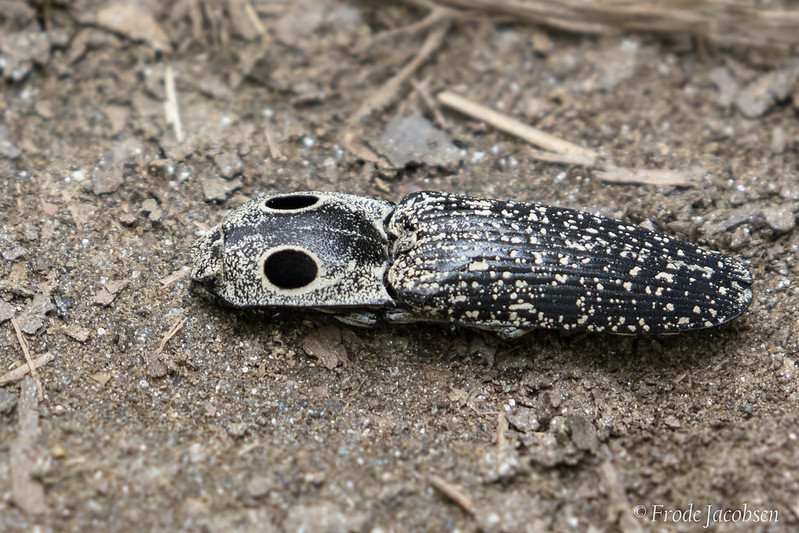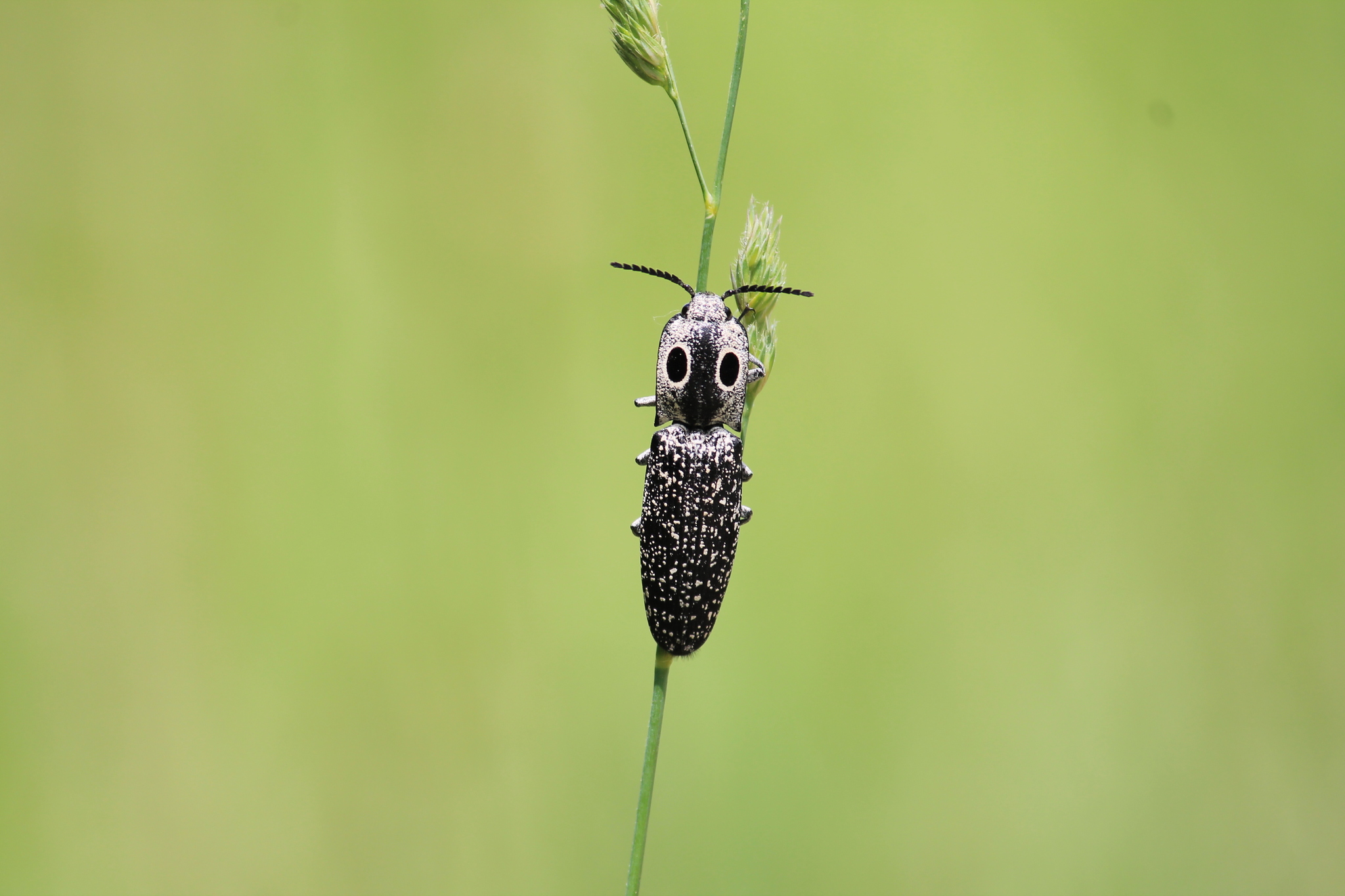Map Snapshot

























743 Records
Status
Widespread in the eastern U.S. in deciduous and mixed woods.
Description
Compare similar Blind Click Beetle.
Relationships
Larvae prey upon other beetle larvae, including longhorn beetles, in rotting wood.
Seasonality Snapshot
Source: Wikipedia
| Alaus oculatus | |
|---|---|

| |
| Scientific classification | |
| Domain: | Eukaryota |
| Kingdom: | Animalia |
| Phylum: | Arthropoda |
| Class: | Insecta |
| Order: | Coleoptera |
| Suborder: | Polyphaga |
| Infraorder: | Elateriformia |
| Family: | Elateridae |
| Subfamily: | Agrypninae |
| Tribe: | Hemirhipini |
| Genus: | Alaus |
| Species: | A. oculatus
|
| Binomial name | |
| Alaus oculatus | |
| Synonyms[1] | |
| |
Alaus oculatus, commonly called the eastern eyed click beetle or eyed elater, is a species of click beetle.


Description
[edit]Alaus oculatus can reach a length of about 25–45 millimetres (1.0–1.8 in).[2] They have an elongated body, black in color throughout. The pronotum exhibits a large oval patch of darker scales, framed in white, on each side - the common name of the beetle derives from this feature. The elytra are striated and mottled with silvery whitish scales.[2][3][4] The "false eyes" depicted on the pronotum are a defensive adaptation that has evolved because of its advantage confusing or frightening potential predators. The eyespots are a form of self-mimicry, in which one part of the body has adapted to mimic another body part. Like all click beetles, A. oculatus is also capable of suddenly catapulting itself out of danger by releasing the energy stored by a click mechanism, which consists of a stout spine on the prosternum and a matching groove in the mesosternum.[5]
Life cycle
[edit]Eggs are laid in soil or on standing deadwood. Many larvae from the click beetle family Elateridae are commonly referred to as wireworms and are prominent agricultural pests that feast on plant matter. However, the larvae of Alaus oculatus are unique among wireworms because they are predatory to other beetle larvae feeding in decaying wood, especially Cerambycidae.[2] The larva pupate in rotting logs or below the ground and the adults emerge in the spring and are commonly found until September.[6]
Diet
[edit]The adults do not eat much but their diet consists of nectar and plant juice. The larvae diet consists of grubs of wood-boring beetles.[4] The larvae are voracious on wood borers, and during their development caged specimens were observed to devour more than 200 cerambycid larvae each.[7]
Distribution and habitat
[edit]This species is present in Central and North America.[2] It can be found in deciduous/mixed forests and woodlands.[4]
References
[edit]- ^ "Alaus oculatus Report". Integrated Taxonomic Information System. Retrieved 2024-07-11.
- ^ a b c d R.E. Woodruff (2014). "Featured creatures: Alaus spp". University of Florida. Retrieved 2017-07-13.
- ^ "Eyed click beetle (Alaus oculatus) (Linnaeus, 1758)". Forestry Images, The University of Georgia. 10 May 2014. Retrieved 2017-07-13.
- ^ a b c "Species Alaus oculatus - Eyed Click Beetle". BugGuide.net. 2016. Retrieved 2017-07-13.
- ^ Evans, Arthur V.; Bellamy, Charles (2000). An Inordinate Fondness for Beetles. University of California Press. pp. 27–28. ISBN 978-0-520-22323-3.
- ^ Borror, D., R. White. 1970. Peterson Field Guides. Insects. Boston: Houghton Mifflin Company.
- ^ Craighead FC. 1950. Insect Enemies of Eastern Forests. U.S. Department of Agriculture Miscellaneous Publication 657: 1- 679.
External links
[edit] Media related to Alaus oculatus at Wikimedia Commons
Media related to Alaus oculatus at Wikimedia Commons

































